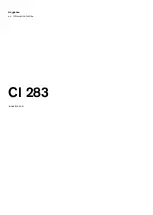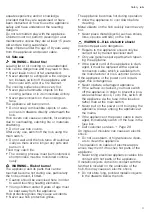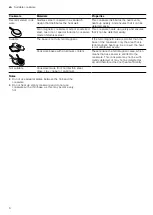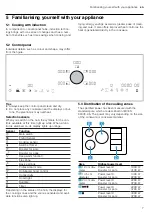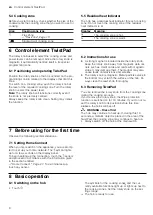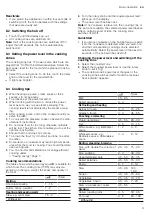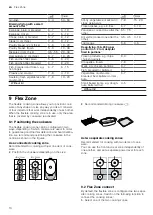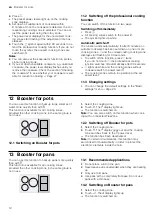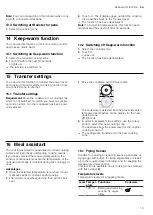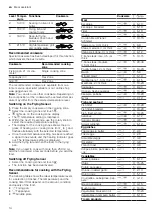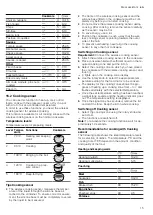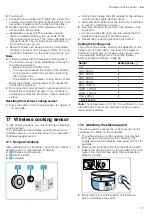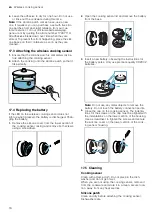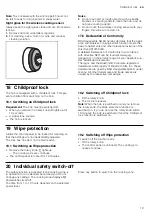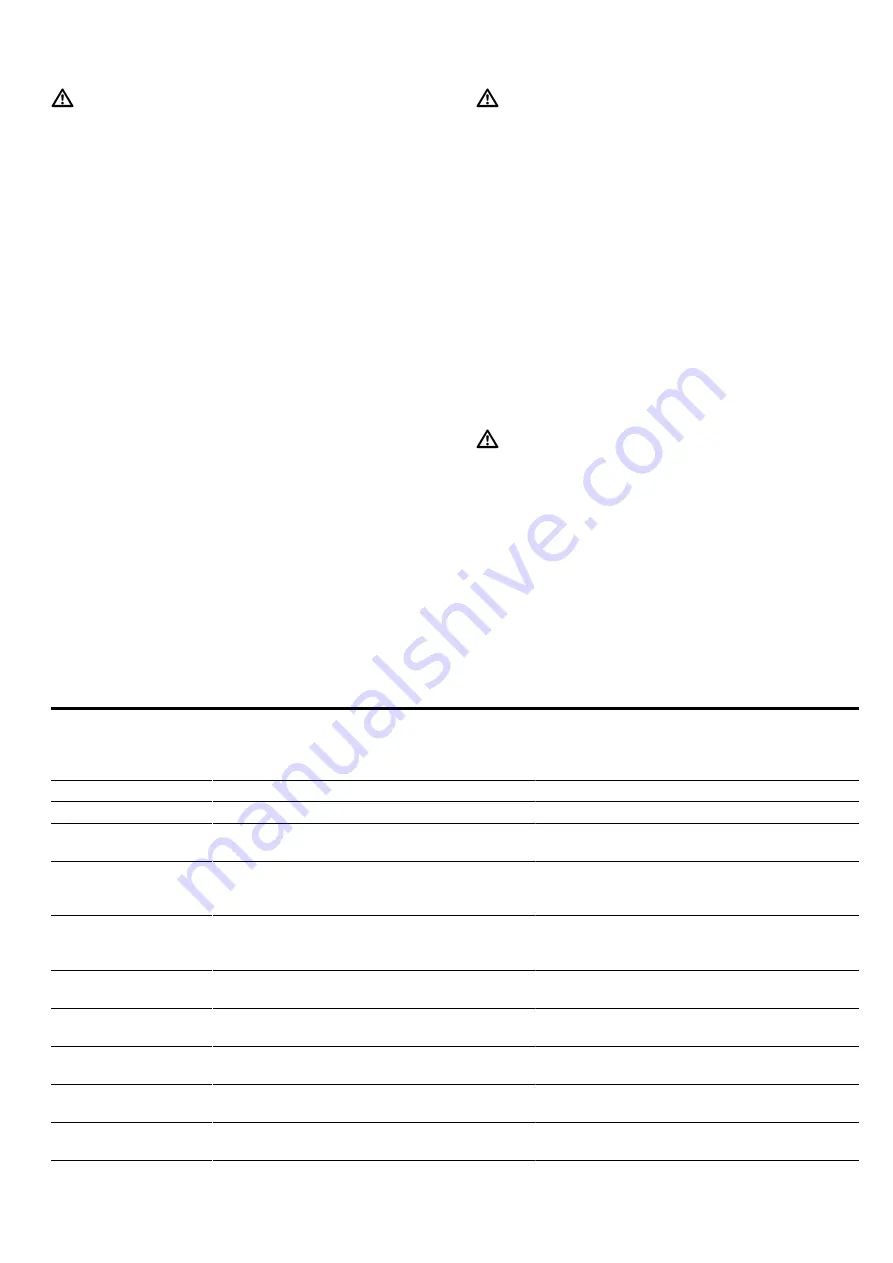
en
Avoiding material damage
4
WARNING ‒ Risk of injury!
Saucepans may suddenly jump due to liquid
between the saucepan base and the hotplate.
▶
Always keep hotplates and saucepan
bases dry.
▶
Never use icy-cold cookware that has been
in the freezer.
The wireless temperature sensor is equipped
with a battery, which may become damaged if
it is exposed to high temperatures.
▶
Remove the sensor from the cookware and
store it away from any heat sources.
The temperature sensor may be very hot
when removing it from the saucepan.
▶
Wear oven gloves or use a tea towel to re-
move it.
When cooking in a bain marie, the hob and
cooking container could shatter due to over-
heating.
▶
The cooking container in the bain marie
must not directly touch the bottom of the
water-filled pot.
▶
Only use heat-resistant cookware.
An appliance with a cracked or broken sur-
face can cause cuts.
▶
Do not use the appliance if it has a cracked
or broken surface.
WARNING ‒ Danger: Magnetism!
The removable control element is magnetic
and may affect electronic implants, e.g. heart
pacemakers or insulin pumps.
▶
Persons with electronic implants must
stand at least 10 cm away from the mag-
netic control element. Never put the control
element in your pockets.
The wireless temperature sensor is magnetic
and can damage electronic implants, e.g.
heart pacemakers or insulin pumps.
▶
Persons with electronic implants must
stand at least 10 cm away from the mag-
netic control element.
▶
Never put the control element in your pock-
ets.
WARNING ‒ Risk of suffocation!
Children may put packaging material over
their heads or wrap themselves up in it and
suffocate.
▶
Keep packaging material away from chil-
dren.
▶
Do not let children play with packaging ma-
terial.
Children may breathe in or swallow small
parts, causing them to suffocate.
▶
Keep small parts away from children.
▶
Do not let children play with small parts.
2 Avoiding material damage
This is where you can find the most common causes of damage and tips on how to avoid them.
Damage
Cause
Action
Stains
Unsupervised cooking process.
Monitor the cooking process.
Stains, blisters
Spilled food, especially food with a high
sugar content.
Remove immediately with a glass scraper.
Stains, blisters or
fractures in the glass
Defective cookware, cookware with melted
enamel or cookware with copper or alu-
minium base.
Use suitable cookware that is in a good con-
dition.
Stains, discolouration
Unsuitable cleaning methods.
Only use cleaning agents that are suitable for
glass ceramic, and only clean the hob when
it is cold.
Blisters or fractures in
the glass
Knocks or falling cookware, cooking ac-
cessories or other hard or pointed objects.
When cooking, do not hit the glass or let ob-
jects fall onto the hob.
Scratches, discolour-
ation
Rough cookware bases or moving the cook-
ware on the hob.
Check the cookware. Lift the cookware when
moving it.
Scratches
Salt, sugar or sand.
Do not use the hob as a work surface or
storage space.
Scratches
Material residue between the hob and the
rotary knob.
Keep the rotary knob contact area clean.
Damage to the appli-
ance
Cooking with frozen cookware.
Never use frozen cookware.

